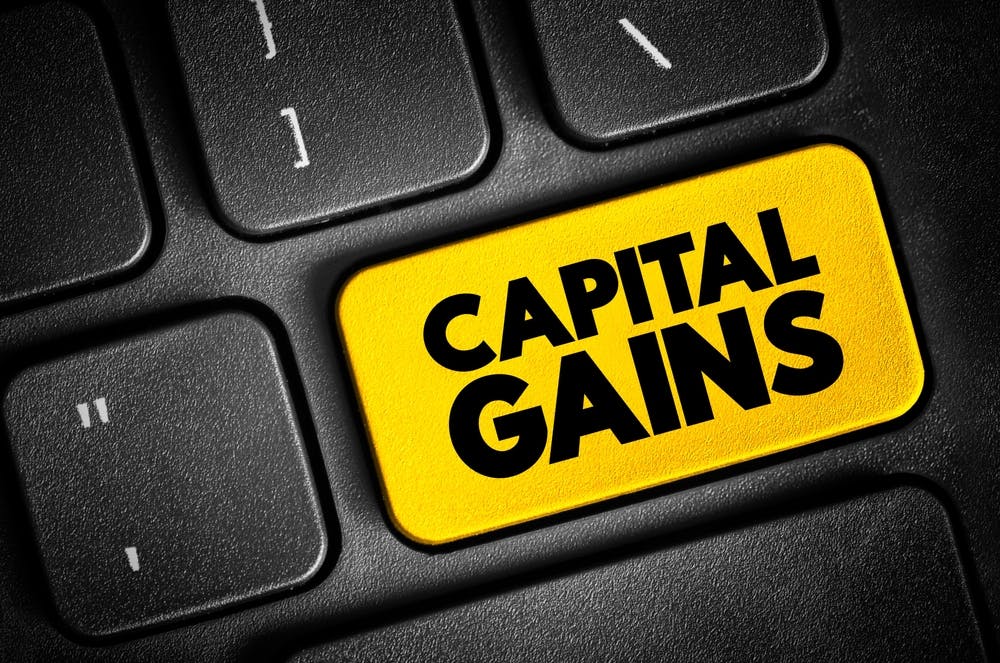How We Think About Taxes
June 17, 2025
We’re not fans of taxes. Don’t get me wrong – we’re civic-minded, and when the tax bill comes, we pay it. But … if there are ways to help our clients avoid or defer taxes, we’re all for it.
The biggest tax implication for investors often comes from capital gains. When you buy an asset and it appreciates, there’s a tax on the gain. That tax, though, has a unique characteristic: it only comes due when you sell the asset. This puts the decision on when to realize the capital gain (and pay the tax) in our hands – a valuable option.

Data Sources: IRS, Charles Schwab
It’s like an interest free loan from the IRS: you have a contingent liability, but it’s payable whenever you choose. In the meantime, we get to keep on investing those dollars for your benefit – compounding your capital on the IRS’s dime. For some reason, that thought always makes me smile.
There are times, though, when we may want to sell an appreciated asset. Maybe the company’s valuation has become stretched. Maybe we’re no longer comfortable with the quality of management. Or maybe the long-term prospects of the industry are no longer attractive.
When that happens, we face a decision: stay put in a less-than-ideal investment (with a large unrealized gain), or realize the capital gain, pay the tax, and move to a more attractive opportunity.
To help make that decision, we need to calculate the breakeven rate – the return a new investment needs to generate in order to offset the tax payment and still outperform the sold security. (If you’re interested, we have a spreadsheet that does these calculations – we’re happy to share and walk you through the steps).

Data Sources: Allied calculations
In the example above, we purchased shares in Widget Company in August 2016 for $57 per share. Today, those shares are worth $527 – an 825% gain (28.5% annually). If we sell, and assume a 20% capital gains rate, we’ll owe $94 in tax per share sold.
It’s been a home-run investment, but now Widget Company is trading for over 30 times earnings, and we expect forward growth to slow to the mid-single digits (we’ll use 7%). We think now may be a good time to take profits.

Data Sources: Allied calculations
To calculate the breakeven rate, we factor in Widget’s estimated growth rate (7%), our time horizon (10 years), and the tax paid ($94). With those assumptions, the breakeven rate comes out to 8.1% per year. If we can find a new investment with an estimated return of 8.1% or greater, it’s worth realizing the capital gain on our Widget shares – even if it means writing a check to the IRS next April.
While valuable in clarifying our thinking, this analysis is a guidepost, not a definitive answer. There are a number of estimates baked into the calculation: expected returns, time horizon, and assumptions about future tax policy. Change these assumptions, and the breakeven rate can shift significantly.
That’s why we want the breakeven rate to be blindingly obvious – we want a huge margin of safety built into the analysis. Because even though it pains us to write that capital gains tax check, if the data tells us we’re leaving money on the table by not paying, it, we’re happy to realize those gains and move on to greener (investment) pastures.
At the end of the day, we never want to let the tax tail wag the investing dog.
If you have any questions about your account(s), if there has been a change in your financial situation or investment objectives, or if you’d like to schedule a complimentary consultation to learn more about how our team can help you navigate the market and achieve your long-term financial goals, please feel free to contact us at (406) 839-2037.
